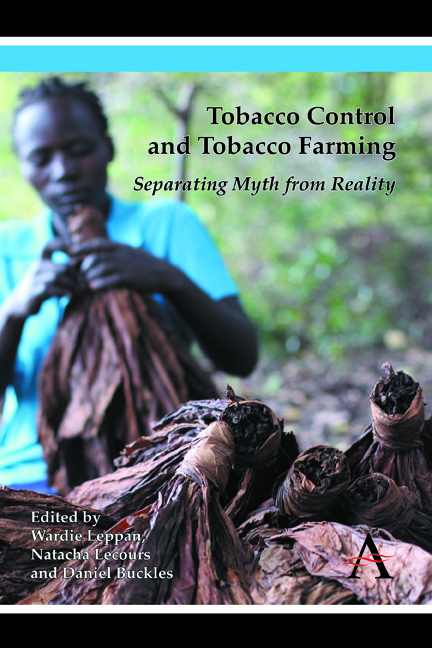Book contents
- Frontmatter
- Contents
- List of Figures, Tables and Photographs
- Foreword
- Preface
- Introduction: Separating Myth from Reality
- Section One The Determinants of Tobacco Leaf Demand
- Section Two Tobacco-Farming Conditions in Low- and Middle-Income Countries
- Section Three Economically Sustainable Alternatives to Tobacco
- Chapter 5 Breaking the Dependency on Tobacco Production: Transition Strategies for Bangladesh
- Chapter 6 Substituting Bamboo for Tobacco in South Nyanza Region, Kenya
- Chapter 7 Diversification Strategies for Tobacco Farmers: Lessons from Brazil
- Conclusion: Reframing the Debate on Tobacco Control and Tobacco Farming
- Annex: A Policy Brief on Tobacco Control and Tobacco Farming
- Contributors
Chapter 6 - Substituting Bamboo for Tobacco in South Nyanza Region, Kenya
from Section Three - Economically Sustainable Alternatives to Tobacco
Published online by Cambridge University Press: 05 November 2014
- Frontmatter
- Contents
- List of Figures, Tables and Photographs
- Foreword
- Preface
- Introduction: Separating Myth from Reality
- Section One The Determinants of Tobacco Leaf Demand
- Section Two Tobacco-Farming Conditions in Low- and Middle-Income Countries
- Section Three Economically Sustainable Alternatives to Tobacco
- Chapter 5 Breaking the Dependency on Tobacco Production: Transition Strategies for Bangladesh
- Chapter 6 Substituting Bamboo for Tobacco in South Nyanza Region, Kenya
- Chapter 7 Diversification Strategies for Tobacco Farmers: Lessons from Brazil
- Conclusion: Reframing the Debate on Tobacco Control and Tobacco Farming
- Annex: A Policy Brief on Tobacco Control and Tobacco Farming
- Contributors
Summary
Features of the Tobacco Industry in Kenya
As in many other African countries, tobacco in Kenya began as a product of British colonialism. In 1907, British American Tobacco (BAT) established a base in Mombasa, Kenya from which to market and distribute tobacco products in what are now Kenya, Uganda, Tanzania and the Democratic Republic of Congo. The establishment of a market for cigarettes in East Africa prompted the opening of a cigarette factory in Jinja, Uganda. By 1948, it was the largest in the region. After a series of expansions, including the purchase of the East African Tobacco Company in Tanzania, BAT opened a cigarette factory in Nairobi in 1957. Other companies eventually set up their own manufacturing centers. Kenya is currently the cigarette manufacturing and distribution hub for 17 African countries (Wanyonyi and Kimosop nd.; Kweyuh 1994; Patel et al. 2007).
To ensure a steady supply of raw tobacco leaf, BAT and other manufacturers created a system of contract buying with farmers. This involved the creation of tobacco markets, the supply of inputs and access to technical training and credit. These arrangements were modeled on similar systems in place for tea and sugarcane production and stimulated tobacco growing throughout the region. The industry that manufactures tobacco products in Kenya currently draws on tobacco production in Kenya, Uganda, Tanzania and Malawi. Despite international efforts to control tobacco use and production in Africa, the industry is also expanding into new areas such as South Sudan where tobacco production is set to begin on a large scale.
- Type
- Chapter
- Information
- Tobacco Control and Tobacco FarmingSeparating Myth from Reality, pp. 189 - 210Publisher: Anthem PressPrint publication year: 2014



